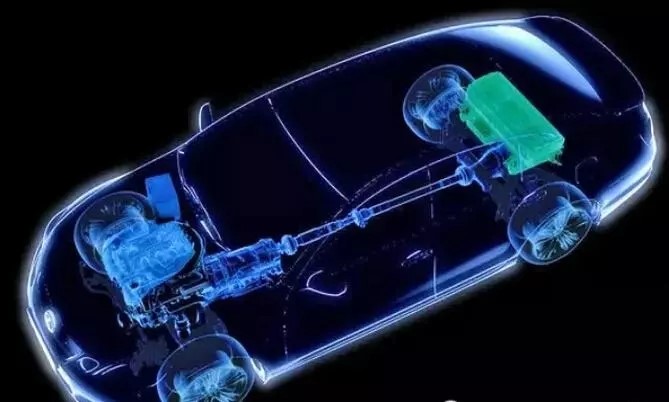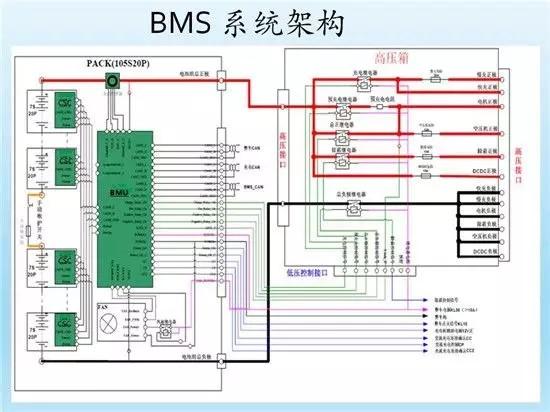Battery Management System (BMS) for New Energy Electric Vehicles
Lgesemi: Developing batteries for electric vehicles has been a tough challenge for years. We need these batteries to be super precise and reliable so they’re totally safe and dependable.
The main difference between electric vehicles and regular cars and trucks is the battery. Electric vehicles use batteries to power the motor, so the Battery Management System, or BMS, is a really important piece of technology.
What is a battery management system?
The Battery Management System (BMS) is an important link between the onboard power battery and the electric vehicle. The BMS system usually includes a detection module and an operation control module. The main functions include: 1) real-time monitoring of battery physical parameters; 2) Battery state estimation; 3) Online diagnosis and warning; Charging, discharging, and pre charging control; 4) Balanced management and thermal management, etc.

Advantages of battery management system:
The main task of a Battery Management System (BMS) is to ensure the design performance of the battery system:
1) Safety, protecting battery cells or battery packs from damage and preventing safety accidents;
2) Durability ensures that the battery operates in a reliable and safe area, extending its lifespan;
3) Power performance, maintaining battery operation in a state that meets vehicle requirements.

Classification of battery management systems:
1) Distributed Battery Management System (BMS): The distributed BMS adopts a distributed system architecture design, including a main control module upper computer (BMU) and a battery detection module lower computer (LECU).
Application areas: Mainly suitable for transportation fields such as buses, logistics cleaning, and large-scale energy storage.
2) Integrated Battery Management System (BMS): The BMS products of the all-in-one series highly integrate the acquisition of individual battery voltage and current, balancing module, SOC estimation, temperature acquisition, and charge discharge control module.
Application areas: small electric vehicles, micro electric vehicles.
The main components and functions of the battery management system are:
(1) Battery terminal module (mainly for data acquisition, such as voltage parameters, current parameters, temperature, communication signals, etc.);
(2) Intermediate control module (mainly communicates with the vehicle system, controls the charger, etc.);
(3) Display module (mainly for data presentation and human-computer interaction).
To meet relevant standards or specifications, the components of BMS need to complete the following tasks:
(1) Battery parameter detection. Including total voltage, total current, single cell voltage detection (to prevent overcharging, overdischarging, and even reverse polarity), temperature detection (preferably with temperature sensors for each string of batteries, key cable joints, etc.), smoke detection (to monitor electrolyte leakage), insulation detection (to monitor leakage), collision detection, etc;
(2) Battery state estimation. Including State of Charge (SOC) or Depth of Discharge (DOD), State of Health (SOH), State of Function (SOF), State of Energy (SOE), Fault and Safety State (SOS), etc;
(3) Online fault diagnosis. Including fault detection, fault type judgment, fault location, fault information output, etc. Fault detection refers to the use of diagnostic algorithms to diagnose fault types and provide early warning based on collected sensor signals. Battery failure refers to sensor failures, actuator failures (such as contactors, fans, pumps, heaters, etc.), as well as network failures, various controller software and hardware failures in subsystems such as battery packs, high-voltage circuits, and thermal management. The faults of the battery pack itself refer to overvoltage (overcharge), undervoltage (overdischarge), overcurrent, ultra-high temperature, internal short circuit faults, loose joints, electrolyte leakage, insulation reduction, etc;
(4) Battery safety control and alarm. Including thermal system control and high-voltage electrical safety control. After the BMS diagnoses the fault, it notifies the vehicle controller through the network and requires the vehicle controller to take effective measures (BMS can also cut off the main circuit power supply when it exceeds a certain threshold) to prevent damage to the battery and personnel caused by high temperature, low temperature, overcharging, overdischarging, overcurrent, leakage, etc;
(5) Charging control. The BMS has a charging management module that can control the charger to safely charge the battery based on its characteristics, temperature, and power level;
(6) Battery balance. The existence of inconsistency makes the capacity of the battery pack smaller than the capacity of the smallest cell in the group. Battery balancing is based on the information of individual cells, using active or passive, dissipative or non dissipative balancing methods to make the capacity of the battery pack as close as possible to the capacity of the smallest cell;
(7) Thermal management. Based on the temperature distribution information inside the battery pack and the charging and discharging requirements, determine the intensity of active heating/cooling to ensure that the battery operates at the most suitable temperature and fully utilizes its performance;
(8) Network communication. BMS needs to communicate with network nodes such as the vehicle controller; At the same time, BMS is inconvenient to disassemble on vehicles and requires online calibration, monitoring, upgrade and maintenance without disassembling the shell. Generally, CAN is used for on-board networks;
(9) Information storage. Used for storing critical data such as SOC, SOH, SOF, SOE, cumulative charge and discharge Ah, fault codes, and consistency;
(10) Electromagnetic compatibility. Due to the harsh operating environment of electric vehicles, BMS is required to have good electromagnetic interference resistance and low external radiation.
The basic concept of power battery:
(1) Battery capacity
Battery capacity is an important performance parameter of a battery, which represents the amount of electricity discharged by the battery under certain discharge rate, temperature, termination voltage, and other conditions. The battery capacity is represented by C, and its units are expressed in ampere hours (Ah) and milliampere hours (mAh).
(2) Charging rate and discharging rate
This concept is represented by the ratio of the rated capacity of the battery to the charging time (discharging time), which can compare the charging and discharging speeds of different batteries.
(3) Overcharging of batteries
Overcharging of a battery refers to the excessive charging of the battery, which can cause certain damage to the battery. When approaching the end of charging, that is, when the battery is almost full, only low current can be used to charge the battery at a low rate. Because the polarization phenomenon generated by small current charging is relatively mild, there is less gas accumulation inside the battery, and there is sufficient time for the battery to dissipate heat.
(4) Charging termination voltage/discharging termination voltage
When the battery is fully charged, it indicates that the active substances on the battery plates have reached saturation. Therefore, even if the battery continues to be charged at this time, the voltage of the battery will no longer rise. At this time, the voltage of the battery is called the charging termination voltage. Similarly, the discharge termination voltage is the lowest voltage that can be reached during discharge.
(5) Internal resistance of battery
The resistance value measured at both ends of the battery is called the internal resistance of the battery.
(6) The lifecycle and aging of batteries
The entire lifecycle of a battery will go through three stages: at the initial stage of use, the capacity will increase by 5% to 10%; In the next stage, the capacity remains unchanged; In the final stage, the battery capacity gradually decreases. This stage of capacity reduction is the aging stage of the battery. Generally speaking, when the battery capacity drops to 80% of its rated capacity, it is considered that the battery life has ended.
summary
As can be seen from the above, the battery pack is an important component of new energy vehicles. Therefore, the Battery Management System (BMS) plays a crucial role in the management of new energy electric vehicle batteries. BMS monitors and effectively manages the battery pack, improves battery efficiency, increases driving range, prolongs battery life, and reduces operating costs.